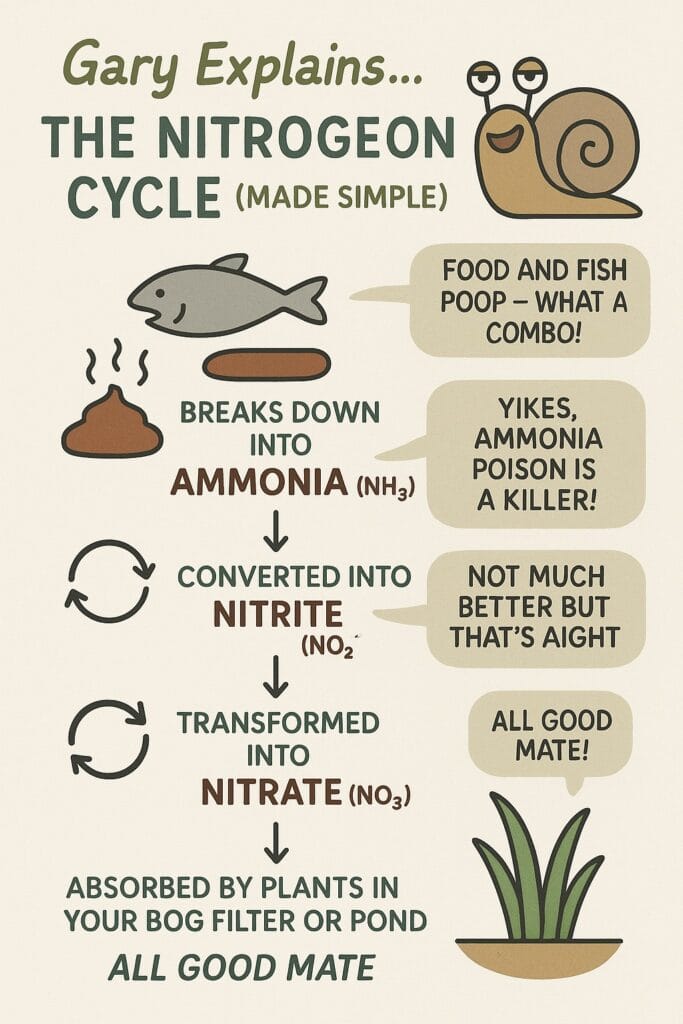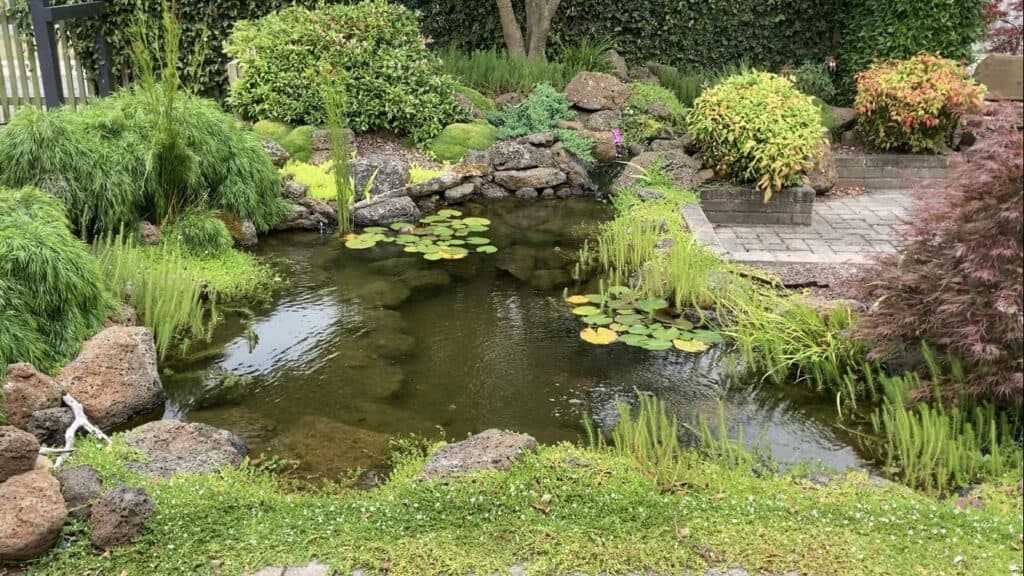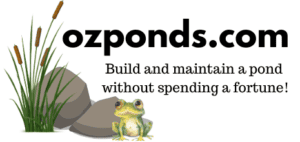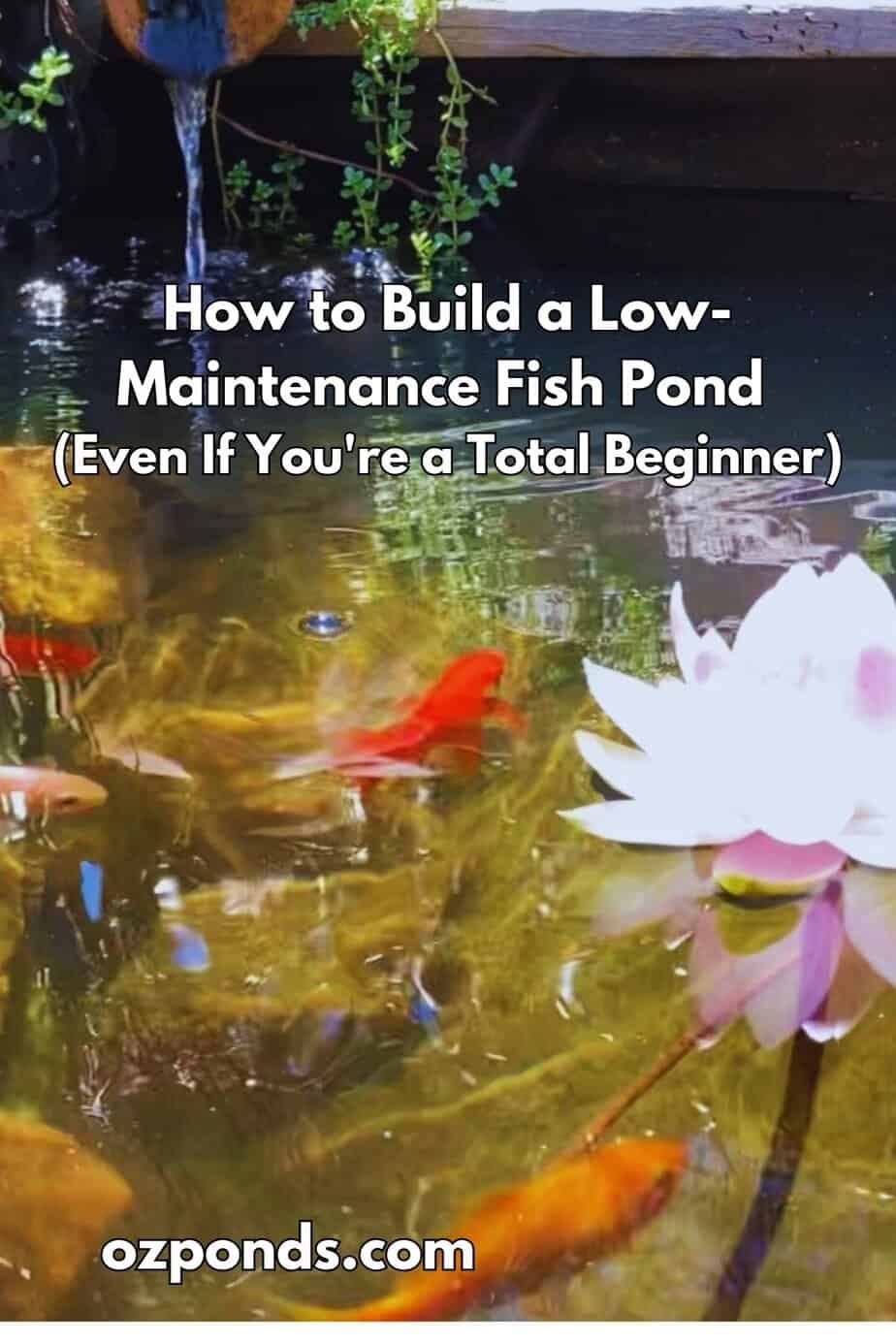Thinking about adding a fish pond to your backyard but not sure where to start?
This simple guide walks you through everything — from choosing a pond liner to selecting the right fish — so you can build a clear, healthy pond without the guesswork.
Whether you’re after a small container pond or your first in-ground build, this post has you covered.
Choose the Right Pond Container or Liner
The first thing you’ll need is something that holds water — a waterproof tub, container, or pond liner.
💡 Tip: Start small! A smaller pond helps you learn the basics before going all-in on a larger setup.
You can use anything from a wine barrel to a purpose-built preformed pond or rubber liner. The beauty of container ponds? No digging required (unless you want to).
If you’re after something more natural-looking or larger, a rubber liner gives you the most flexibility in shape and size.
📌 Want the full backyard pond breakdown? Check out my Ultimate Guide to Building a Pond.
Why a Pond Pump Matters (and What Size to Get)
While it is possible to build a pond with no pump, for your first build, just get one!
The pump:
- Circulates the water
- Helps oxygen enter the pond
- Keeps fish, bacteria, and your entire ecosystem healthy
General rule of thumb: Match the pump’s flow rate to your pond size.
Example:
- 100L (26 gal) pond = 100L/hr (26 gal/hr) pump
- 500L (132 gal) pond = 500L/hr (132 gal/hr) pump
This is just a general rule, it doesn’t work for all ponds, more on that in a bit.
🧠 These small pumps are cheap to run and easy to install, you will also need a filter. If you are looking for energy efficient low volt pumps, click here.
The Secret to a Clean Pond: Filtering with Bacteria
The filter is what separates a clean, healthy pond from one that turns into a green soup.
Here’s what happens in every pond:
- Fish produce ammonia through waste and respiration
- Ammonia is toxic, but helpful bacteria convert it into less harmful nitrate
- A filter grows those bacteria — and that’s called biological filtration
Biological filters just need:
- A wet surface (like filter media, gravel, or sponge)
- A flow of water (from your pump)
🧪 This whole process is called the nitrogen cycle. If you want to nerd out, check out my Quick Guide to the Pond Nitrogen Cycle

You can:
- Buy a simple pump + filter combo (amazon link)
- Or DIY your own (cheaper and, in my opinion, better)
📘 If you want a free bog filter calculator and pond build checklist you can get that here.
Best Beginner Pond Fish (and How Many You Can Keep)
Here are three hardy species that are perfect for beginners — they’re colorful, mosquito-eating machines and handle cold winters and hot summers well.
🐠 Goldfish & Shubunkins
- Classic choice
- Grow to ~30cm (12in)
- Allow 100L (25 gal) per fish
- Stick to common varieties — no fancies (they’re more fragile)
🐟 Rice Fish (Medaka)
- Tiny (4cm / 1.6 in max)
- Super tough and perfect for 100L (26 gal) tubs
- Can stock around 10 fish per 100L (26 gal)
- Will breed like crazy in summer
🐡 White Cloud Mountain Minnows
- Another small, active species (~5cm / 2 in)
- Hardy and pretty, though hard to see from above
- Also breed well outdoors
- Same stocking as rice fish: 10 fish per 100L (26 gal)
🐟 Want more fish ideas? Check out The Best Pond Fish article
⚠️ Warning: Fish breed fast. Understock at first so your filter doesn’t get overwhelmed.
Feeding Your Fish (or Letting Nature Do the Work)
Feeding is optional in an outdoor pond.
If your pond has bugs, algae, and plant life, your fish will snack all day without needing commercial food.
But… it is fun to feed them, and most people do.
Just go easy — overfeeding causes:
- Water clarity issues
- Algae growth
- Poor water quality
🌿 I let my ponds balance themselves naturally. If there’s enough food, baby fish survive. If not, they don’t. It’s nature’s population control.
Here’s a link to an insect based floating flake food that’s ok to feed your small fish. (amazon link)
Why Pond Plants Matter (and What to Watch Out For)
Plants aren’t just for looks. They:
- Provide oxygen and shade
- Reduce algae by absorbing excess nutrients
- Offer shelter for fish and fry
I use mostly slow-growing, non-invasive plants, but if you’re okay with a bit of trimming, fast growers are great for pulling out nutrients quickly.
Tips:
- Avoid aggressive root systems in liner ponds
- Floaters and marginals work great in tubs and ponds with shallow shelves
🌱 Need ideas? Check out my list of 40 Awesome Pond Plants
How Much Maintenance Does a Pond Really Take?
Here’s the truth: if you get your setup right from the start, your pond should mostly look after itself.
Yes, you’ll tweak and learn as you go.
But once the ecosystem is balanced — good filtration, the right number of fish, proper plants — it’s smooth sailing.
🛠 Tools & Resources
If you found this helpful, here are a few tools to make your first pond even easier:
Thanks for reading and good luck with your first pond.

Join my free email list
If you would like to join my free email list click the button below.
I promise I won’t spam you, I’ll only send information I think can help you save money building and maintaining a pond.

